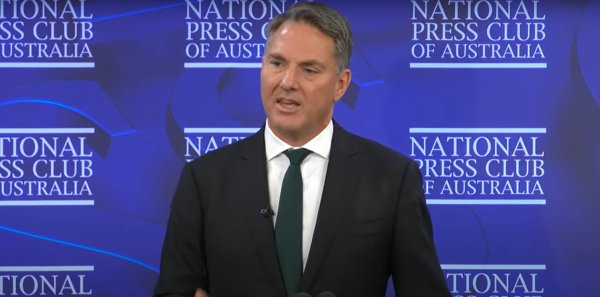Posted by Defence Teaming Centre on
From the outset the National Defence Strategy (NDS) has hit all the key requirements outlined in the Defence Strategic Review (DSR). But the devil is in the detail and Libby Day, CEO of the Defence Teaming Centre is concerned by the lack of transparency around project cancellations and delays.
“The National Defence Strategy is industry’s blueprint over the next two years and comes as a welcome relief after years of uncertainty,” Libby said.
“We align very closely with the priorities listed in the report and are here to support our members in assisting Defence to reach these goals. However, where the report falls short is the lack of clarity on projects which will be cancelled or delayed.
“It is great to have a refreshed IIP that sets out the investment priorities for defence capabilities, but industry needs more clarity around defence project timelines and cancellations to know where they need to be directing their investments to meet defence requirements.
“While the DTC is aware that more reports are expected to be released in the latter part of the year that might provide this clarity to industry, the waiting game for many of our members is no longer a sustainable business option and they are switching to more financially viable sectors.
“This will make it more difficult for Defence to achieve all their Sovereign Defence Industrial Priorities if there are not enough businesses and skilled workforce in Australia’s defence industry to manufacture the capabilities they require.
“DTC looks forward to working with our members, Defence and state and federal government to prevent this from happening and we hope to get more clarity around project cancellations and timeline when we are in Canberra meeting with ministers at the end of the month.”
What we know so far
Project Cuts
- Cancellation of two large support vessels for Navy
- Not going ahead with new heavy lift air capability or the EA-18G Growler electronic attack aircraft
- $1.4 billion will be cut from planned Defence facility upgrades in Canberra with funds being redirected to the Northern Territory base upgrades
Budget
- Defence will spend $53 billion in this financial year, this is set to grow to $100 billion by 2033/34
- Between 2024/25 to 2033/34 the following investments have been approved:
- $14 billion into undersea warfare
- $10 billion into maritime capabilities for sea denial and localised sea control operations
- $9.5 billion in targeting and long-range strike
- $4.5 billion in space and cyber
- $20 billion in amphibious capable combined‑arms land system
- $17 billion in expeditionary air operations
- $1.8 billion in missile defence
- $890 million in theatre logistics
- $2 billion in theatre command and control
- $820 million in GWEO
- $3.4 billion in northern bases
- $3.9 billion in enterprise infrastructure
- $1.5 billion in enterprise data and ICT
- Additional investments will include:
- $11.1 billion over the next decade to deliver the Government’s response to the independent analysis of Navy’s surface combatant fleet;
- $1 billion over the next four years to accelerate ADF preparedness including for long-range strike, targeting and autonomous systems; and
- $38.2 billion over the next decade to fund the rebuilt IIP and accelerate and sustain priority capabilities
Mike Hartas, Chair of the Defence Teaming Centre, welcomed the recent funding announcements as positive for the defence industry.
“The current emphasis on developing asymmetric technologies and systems is commendable,” Mike said. “However, to truly leverage our local capabilities, Defence must prioritise engaging with Australian companies as the preferred suppliers.
“While initiatives like the Australian Strategic Capabilities Accelerator Program are steps in the right direction, there needs to be a more decisive push to integrate and elevate Australian companies in delivering these critical capabilities.
“Our members seek the establishment of long-term contracts that not only secure future planning but also minimise the complexity and associated risks.
“Specifically, we advocate for a framework where Defence only passes down manageable risks, thereby enabling a more efficient and focused industry response."
To read the National Defence Strategy and the Integrated Investment Program click here.




